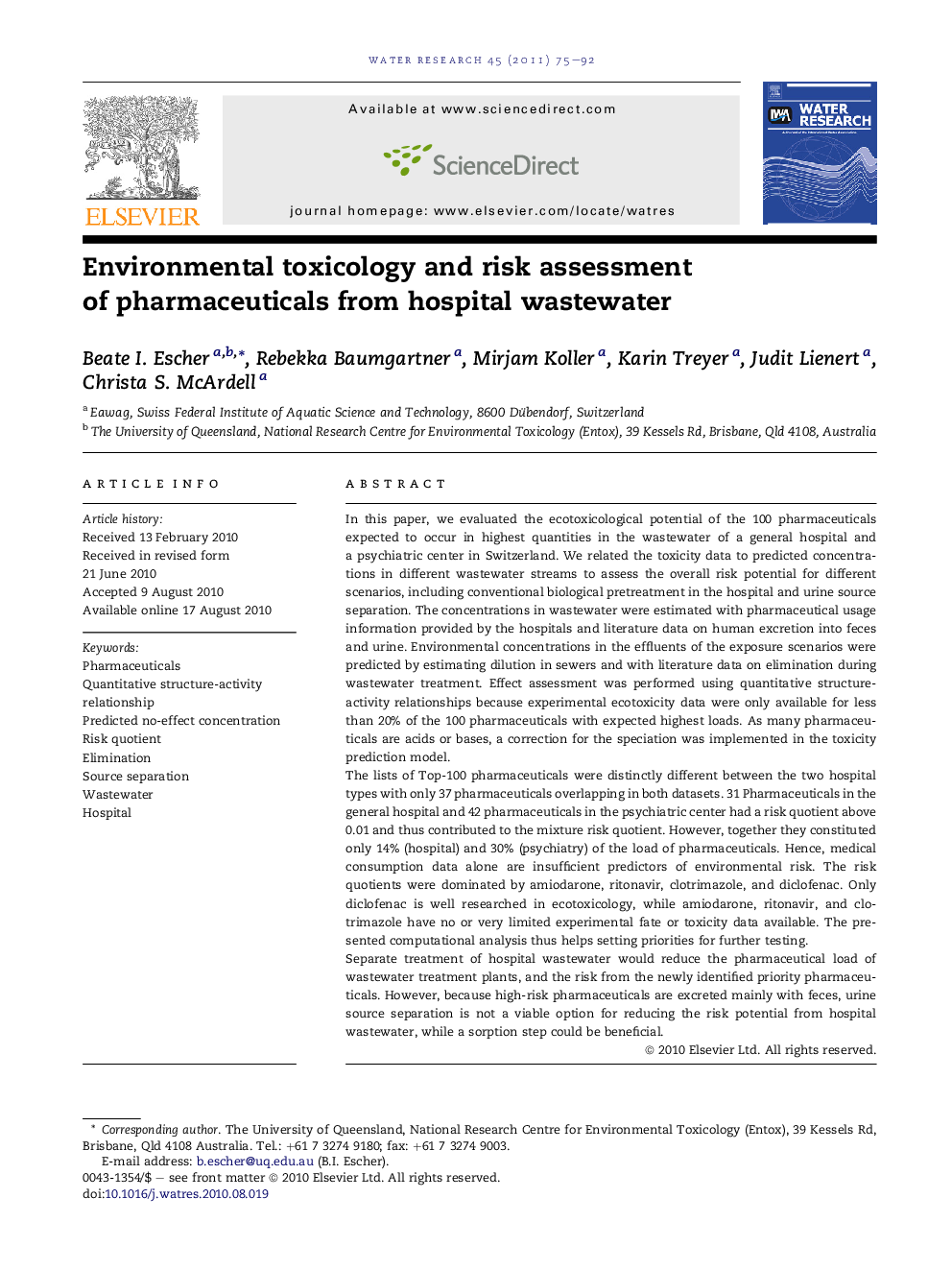| کد مقاله | کد نشریه | سال انتشار | مقاله انگلیسی | نسخه تمام متن |
|---|---|---|---|---|
| 4482071 | 1316847 | 2011 | 18 صفحه PDF | دانلود رایگان |

In this paper, we evaluated the ecotoxicological potential of the 100 pharmaceuticals expected to occur in highest quantities in the wastewater of a general hospital and a psychiatric center in Switzerland. We related the toxicity data to predicted concentrations in different wastewater streams to assess the overall risk potential for different scenarios, including conventional biological pretreatment in the hospital and urine source separation. The concentrations in wastewater were estimated with pharmaceutical usage information provided by the hospitals and literature data on human excretion into feces and urine. Environmental concentrations in the effluents of the exposure scenarios were predicted by estimating dilution in sewers and with literature data on elimination during wastewater treatment. Effect assessment was performed using quantitative structure-activity relationships because experimental ecotoxicity data were only available for less than 20% of the 100 pharmaceuticals with expected highest loads. As many pharmaceuticals are acids or bases, a correction for the speciation was implemented in the toxicity prediction model.The lists of Top-100 pharmaceuticals were distinctly different between the two hospital types with only 37 pharmaceuticals overlapping in both datasets. 31 Pharmaceuticals in the general hospital and 42 pharmaceuticals in the psychiatric center had a risk quotient above 0.01 and thus contributed to the mixture risk quotient. However, together they constituted only 14% (hospital) and 30% (psychiatry) of the load of pharmaceuticals. Hence, medical consumption data alone are insufficient predictors of environmental risk. The risk quotients were dominated by amiodarone, ritonavir, clotrimazole, and diclofenac. Only diclofenac is well researched in ecotoxicology, while amiodarone, ritonavir, and clotrimazole have no or very limited experimental fate or toxicity data available. The presented computational analysis thus helps setting priorities for further testing.Separate treatment of hospital wastewater would reduce the pharmaceutical load of wastewater treatment plants, and the risk from the newly identified priority pharmaceuticals. However, because high-risk pharmaceuticals are excreted mainly with feces, urine source separation is not a viable option for reducing the risk potential from hospital wastewater, while a sorption step could be beneficial.
Journal: Water Research - Volume 45, Issue 1, January 2011, Pages 75–92